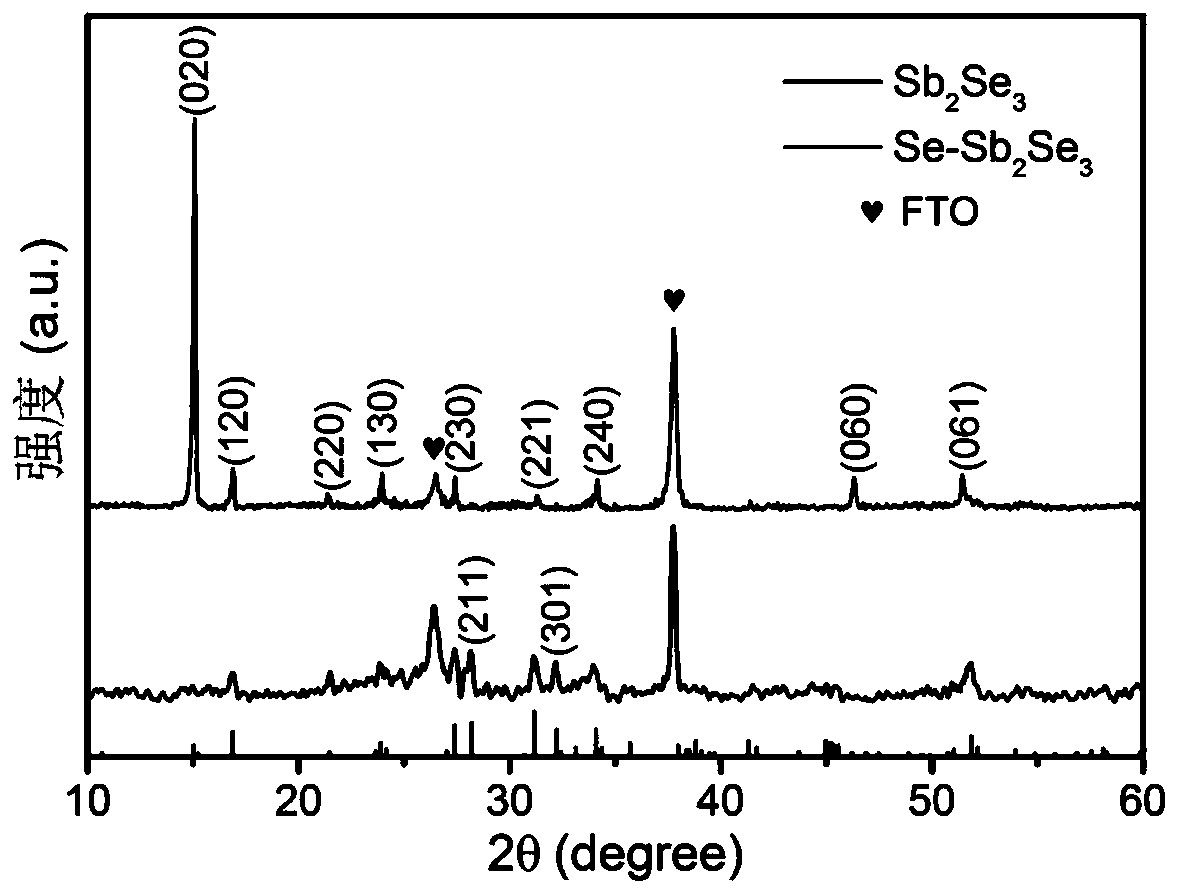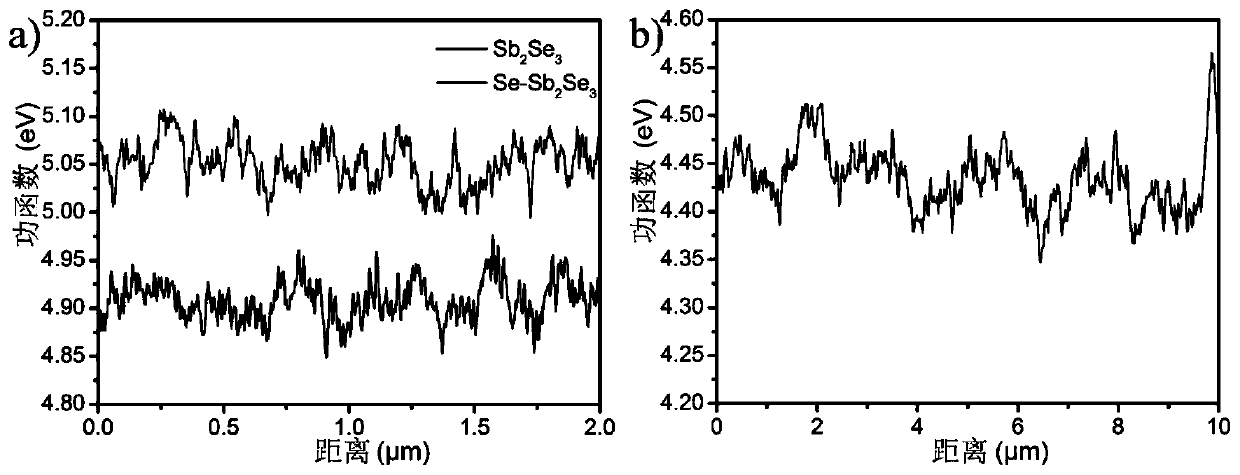Full-inorganic P/N heterojunction antimony selenide/perovskite solar cell and preparation method thereof
A solar cell and perovskite technology, applied in circuits, electrical components, photovoltaic power generation, etc., can solve problems such as poor thermal stability, poor device performance, weak p-type, etc., to achieve structural optimization, high long-term working stability, composite reduced effect
- Summary
- Abstract
- Description
- Claims
- Application Information
AI Technical Summary
Problems solved by technology
Method used
Image
Examples
Embodiment 1
[0044] A method for preparing an all-inorganic P / N heterojunction antimony selenide / perovskite solar cell, comprising the steps of:
[0045] (1) Part of the area on one side of the FTO conductive glass is etched. The etching method is as follows: add dilute hydrochloric acid with a concentration of 2mol / L at room temperature to the surface of the FTO glass covered with half the area of zinc powder, and the etching is completed after 10 minutes of reaction. Corrosion to prevent short circuit; then ultrasonically cleaned with detergent, ultrapure water, acetone and ethanol at room temperature for 20 minutes, dried and placed in a UV-ozone processor for 20 minutes at room temperature to prepare a local conductive film with a thickness of 150nm FTO conductive glass substrate.
[0046] (2) Using 2ml of absolute ethanol as a solvent, add 254 μl of titanium isopropanol and 34 μl of 2mol / L dilute hydrochloric acid to it, and mix evenly to prepare a titanium dioxide precursor solutio...
Embodiment 2
[0055] A preparation method of an all-inorganic P / N heterojunction antimony selenide / perovskite solar cell, as described in Example 1, the difference is:
[0056] The metal counter electrode layer is an Au layer; the preparation method is as follows: the sample is placed in a vacuum thermal evaporation chamber, and the air pressure in the evaporation chamber is lower than 1*10 -4 At Pa, start to heat up the solid particle Au at a heating rate of 8°C / min until the metal boils, Au evaporates and deposits on the selenized Sb 2 Se 3 layer, an Au metal counter electrode layer with a thickness of 50nm was obtained, and finally an all-inorganic P / N heterojunction antimony selenide / perovskite solar cell was obtained; other steps and conditions were consistent with those in Example 1.
Embodiment 3
[0058] A preparation method of an all-inorganic P / N heterojunction antimony selenide / perovskite solar cell, as described in Example 1, the difference is:
[0059] Step (3), inorganic CsPbBrI 2 The preparation method of the perovskite layer is changed from the spin coating method to the vacuum thermal evaporation method, and the preparation method is as follows: the raw materials CsBr and PbI 2 Put 0.6mmol each into two evaporating quartz crucibles, and the air pressure in the evaporation chamber is lower than 1*10 -4 At Pa, heat up to 250°C at a heating rate of 10°C / min, solid powder PbI 2 Evaporated and deposited on TiO layer; PbI 2 After evaporation, the temperature was raised to 500°C at a rate of 10°C / min. The solid powder CsBr evaporated and continued to deposit. After evaporation, it was taken out and annealed at 150°C for 15 minutes in a nitrogen atmosphere to obtain a perovskite layer with a thickness of 250nm. Other steps and conditions are consistent with Example ...
PUM
 Login to View More
Login to View More Abstract
Description
Claims
Application Information
 Login to View More
Login to View More - R&D
- Intellectual Property
- Life Sciences
- Materials
- Tech Scout
- Unparalleled Data Quality
- Higher Quality Content
- 60% Fewer Hallucinations
Browse by: Latest US Patents, China's latest patents, Technical Efficacy Thesaurus, Application Domain, Technology Topic, Popular Technical Reports.
© 2025 PatSnap. All rights reserved.Legal|Privacy policy|Modern Slavery Act Transparency Statement|Sitemap|About US| Contact US: help@patsnap.com



